Which iPad model have I got?
If you’re curious to find out which iPad model you’ve got, either because you’re selling it, or because you want to know if particular software will work on it, you’ve come to the right place. In this article we’ll help you find out which iPad you’ve got.
Apple tends to downplay the version numbers of its tablets, which are rarely prominent on the box. The device you own may have been advertised as just ‘iPad’ in the shop. And it’s a complicated question: there have been a total of 30 iPad models over the years, which we can divide into four sub-brands:
- iPad, iPad 2, iPad 3, iPad 4, iPad 9.7in (5th gen/2017), iPad 9.7in (6th gen/2018), iPad 10.2in (7th gen/2019), iPad 10.2in (8th gen/2020), iPad 10.2in (9th gen/2021)
- iPad Air, iPad Air 2, iPad Air (3rd gen/2019), iPad Air (4th gen/2020), iPad Air (5th gen/2022)
- iPad mini, iPad mini 2 with Retina display, iPad mini 3, iPad mini 4, iPad mini (5th gen/2019), iPad mini (6th gen/2021)
- iPad Pro 12.9in (2015), iPad Pro 9.7in (2016), iPad Pro 10.5in (2nd gen/2017), iPad Pro 12.9in (2nd gen/2017), iPad 11in (3rd gen/2018), iPad 12.9in (3rd gen/2018), iPad Pro 11in (4th gen/2020), iPad Pro 12.9in (4th gen/2020), iPad Pro 11in (5th gen/2021), iPad Pro 12.9in (5th gen/2021)
But don’t worry! In this article we’ll help you work out which model and generation of iPad you’ve got.
Look in Settings
The easiest way to find out which iPad model you’ve got is to open the Settings app and check in General > About. In the top set of entries you’ll see one for Model Name. Easy! The screenshot below, for example, was taken on a fifth-gen iPad Pro 12.9in.
(Warning! The entry for Name, at the top of the menu, may also appear to answer your question. But this can be misleading, because if you set up from a backup it will use whatever you called your last iPad. Note that this field is editable, so tap to enter the correct model name.)
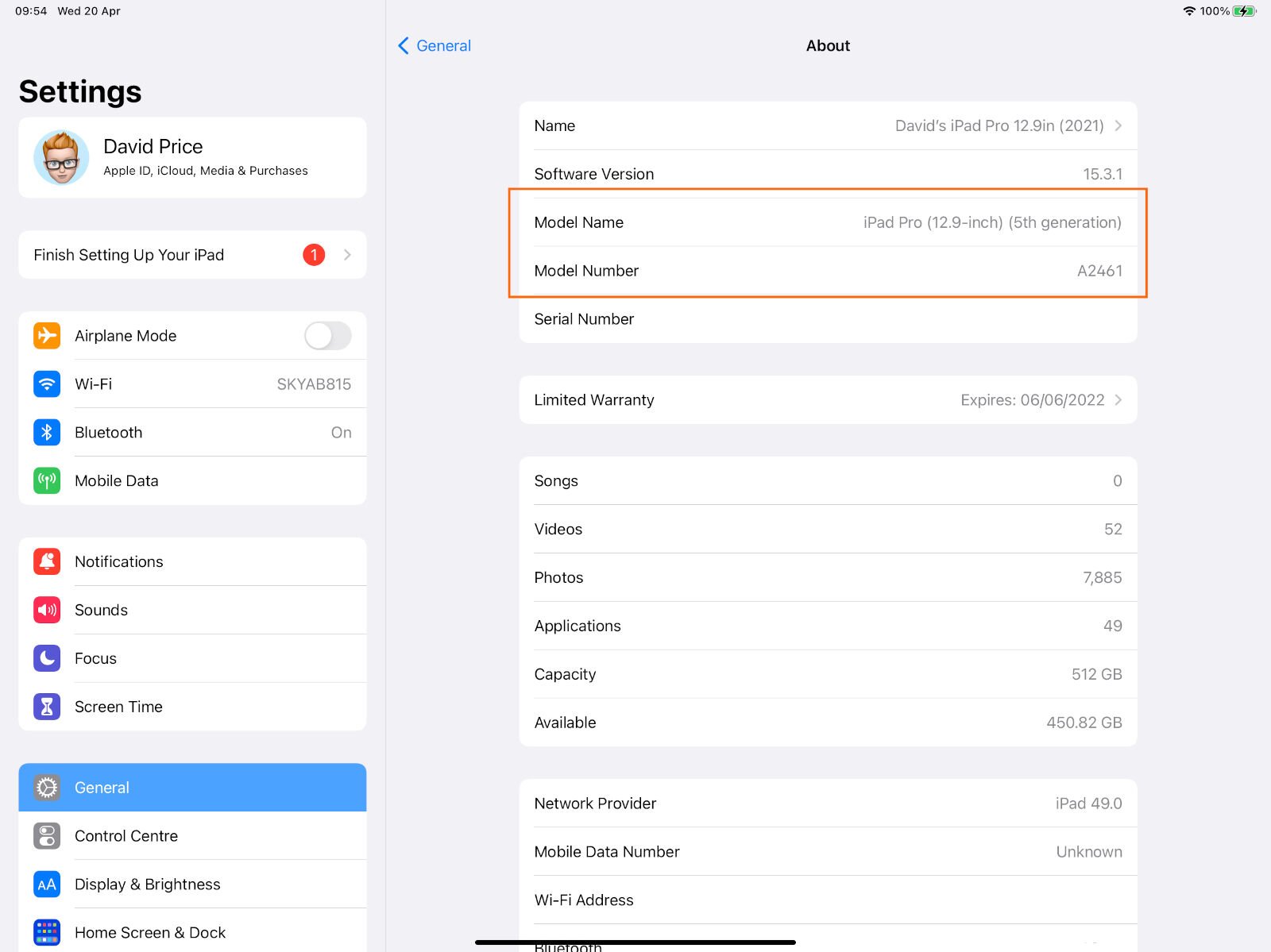

Below the Model Name there’s a separate entry for Model Number. In fact, tapping this toggles between two numbers, one beginning with an A and the other (probably) beginning with an M. The A number is more useful when determining the identity and specs of a tablet, as we’ll see in the next section.
Check your iPad’s model number
What if your iPad is broken or out of power, or for some other reason you can’t go into the Settings app? We can find out in other ways.
Now, Apple doesn’t simply write the generation and model name on the back of each iPad, because that would be far too easy. But you will find a model number marked there, and you can use this to work out the rest. This model number is the same as the A number that we saw in the Settings app earlier.
On the iPad below, for example, the A number (shown in the zoomed-in inset at the top right) is A1652, which tells us it’s an iPad Pro 12.9in (2015) with cellular.
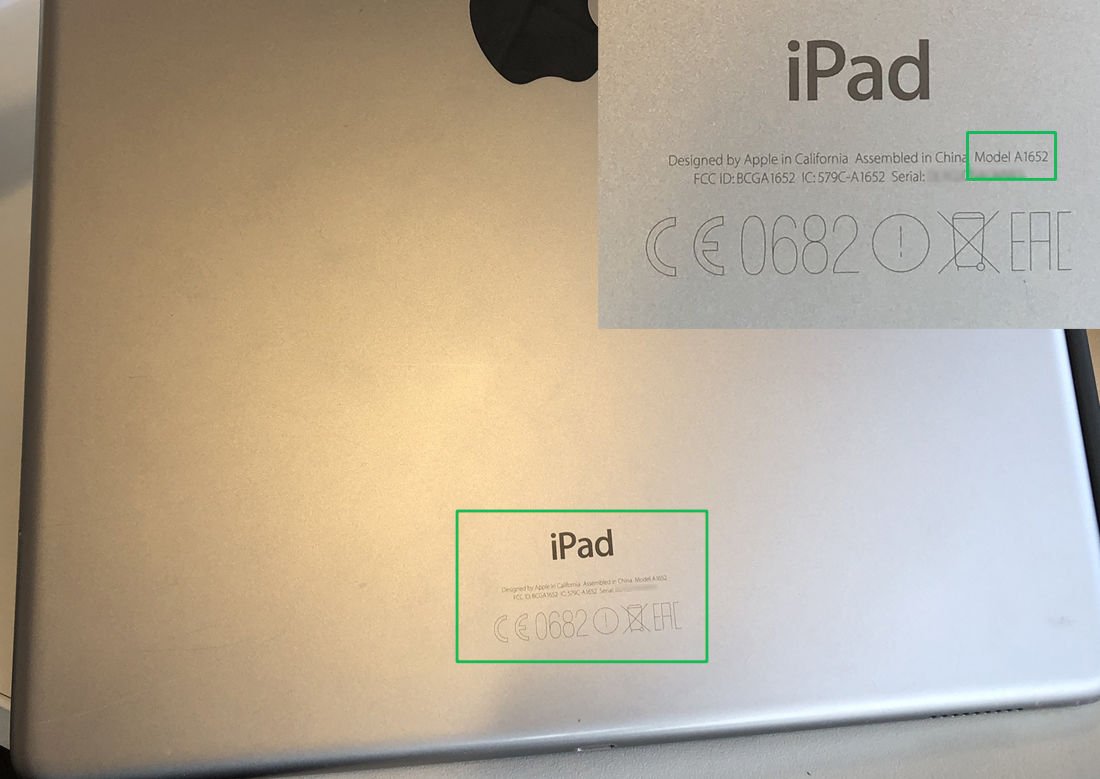

Once you’ve found your device’s A number – either by looking on the back, or by checking the Settings app – you can easily tell which iPad it is by checking it against the following table. We’ve included other clues which may help if you can’t find the model number (such as screen sizes, types of ports, colour options and so on), and these are explained in more detail below the table.
| iPad model | Version number | Notes |
| iPad (also known as iPad 1) | A1219 (Wi-Fi version), A1337 (cellular version) | Mid-size screen (9.7in diagonally). Old 30-pin port at the bottom. Home button (without Touch ID fingerprint sensor). No camera apertures. Only available with black front (back is silver). Introduced April 2010. |
| iPad 2 | A1395 (Wi-Fi), A1397, A1396 (cellular) | Mid-size screen (9.7in). Old 30-pin port. Home button (without Touch ID). Available with black or white front (back is silver). Introduced March 2011. |
| iPad 3 (3rd-gen iPad or ‘New iPad’) | A1416 (Wi-Fi), A1430, A1403 (cellular) | Mid-size screen (9.7in). Old 30-pin port. Home button (without Touch ID). Available in black or white. Introduced March 2012. |
| iPad 4 (4th-gen iPad) | A1458 (Wi-Fi), A1459, A1460 (cellular) | Mid-size screen (9.7in). Lightning port at the bottom. Home button (without Touch ID). Available in black or white. Introduced November 2012. |
| iPad 9.7in (2017) (iPad 2017 or 5th-gen iPad) | A1822 (Wi-Fi), A1823 (cellular) | Mid-size screen (9.7in). Lightning port at the bottom. Home button with Touch ID. Available in silver, gold or Space Grey (black). Introduced March 2017. |
| iPad 9.7in (2018) (iPad 2018 or 6th-gen iPad) | A1893 (Wi-Fi), A1954 (cellular) | Mid-size screen (9.7in). Lightning port. Home button with Touch ID. Available in silver, gold or Space Grey. Introduced March 2018. |
| iPad 10.2in (2019) (7th-gen iPad) | A2197 (Wi-Fi), A2200, A2198 (cellular) | Mid-size screen (10.2in). Lightning port. Home button with Touch ID. Available in silver, gold or Space Grey. Introduced September 2019. |
| iPad 10.2in (2020) (8th-gen iPad) | A2270 (Wi-Fi), A2428, A2429, A2430 (cellular) | Mid-size screen (10.2in). Lightning port. Home button with Touch ID. Available in gold, silver and Space Grey. Introduced September 2020. |
| iPad 10.2in (2021) (9th-gen iPad) | A2602 (Wi-Fi), A2604 (cellular), A2603 (North America only), A2605 (China) |
Mid-size screen (10.2in). Lightning port. Home button with Touch ID. Available in silver and Space Grey. Introduced September 2021. |
| iPad Air (iPad Air 1) | A1474 (Wi-Fi), A1475 (cellular) | Mid-size screen (9.7in). Lightning port. Home button (without Touch ID). Available in black or white. Introduced November 2013. |
| iPad Air 2 | A1566 (Wi-Fi), A1567 (cellular) | Mid-size screen (9.7in). Lightning port. Home button with Touch ID. Available in silver, gold or Space Grey. Introduced October 2014. |
| iPad Air (2019) (3rd-gen iPad Air) | A2152 (Wi-Fi), A2123, A2153 (cellular) | Mid-size screen (10.5in). Lightning port. Home button with Touch ID. Available in silver, gold or Space Grey. Introduced March 2019. |
| iPad Air (2020) (4th-gen iPad Air) | A2316 (Wi-Fi), A2324, A2325, A2072 (cellular) | Mid-size screen (10.9in). USB-C port. No Home button; Touch ID sensor in power button. Available in blue, green, pink, silver and Space Grey. Introduced September 2020. |
| iPad Air (2022) (5th-gen iPad Air) | A2588 (Wi-Fi), A2589, A2591 (cellular) | Mid-size screen (10.9in). USB-C port. No Home button; Touch ID sensor in power button. Available in blue, purple, pink, Starlight and Space Grey. Introduced March 2022. |
| iPad mini (iPad mini 1) | A1432 (Wi-Fi), A1454, A1455 (cellular) | Smaller screen (7.9in – about the size of a paperback). Lightning port. Home button (without Touch ID). Available in black or white. Introduced October 2012. |
| iPad mini 2 (iPad mini with Retina display) | A1489 (Wi-Fi), A1490 (cellular) | Smaller screen (7.9in). Lightning port. Home button (without Touch ID). Available in black or white. Introduced November 2013. |
| iPad mini 3 | A1599 (Wi-Fi), A1600 (cellular) | Smaller screen (7.9in). Lightning port. Home button with Touch ID. Available in silver, gold or Space Grey. Introduced October 2014. |
| iPad mini 4 | A1538 (Wi-Fi), A1550 (cellular) | Smaller screen (7.9in). Lightning port. Home button with Touch ID. Available in silver, gold or Space Grey. Introduced September 2015. |
| iPad mini (2019) (5th-gen iPad mini) | A2133 (Wi-Fi), A2124, A2126 (cellular) | Smaller screen (7.9in). Lightning port. Home button with Touch ID. Available in silver, gold or Space Grey. Introduced March 2019. |
| iPad mini (2021) (6th-gen iPad mini) | A2567 (Wi-Fi), A2568 (cellular), A2569 (China) | Smaller screen (8.3in). USB-C port. No Home button; Touch ID sensor in power button. Available in pink, purple, Starlight or Space Grey. Introduced September 2021. |
| iPad Pro 12.9in (2015) | A1584 (Wi-Fi), A1652 (cellular) | Large screen (12.9in). Lightning port. Home button with Touch ID. Available in silver, gold or Space Grey. Introduced September 2015. |
| iPad Pro 9.7in (2016) | A1673 (Wi-Fi), A1674, A1675 (cellular) | Mid-size screen (9.7in). Lightning port. Home button with Touch ID. Available in silver, gold, Space Grey or Rose Gold (pink). Introduced March 2016. |
| iPad Pro 10.5in (2017) | A1701 (Wi-Fi), A1709 (cellular) | Mid-size screen (10.5in). Lightning port. Home button with Touch ID. Available in silver, gold, Space Grey or Rose Gold (pink). Introduced June 2017. |
| iPad Pro 12.9in (2017) (2nd-gen iPad Pro 12.9in) | A1670 (Wi-Fi), A1671 (cellular) | Large screen (12.9in). Lightning port. Home button with Touch ID. Available in silver, gold or Space Grey. Introduced June 2017. |
| iPad Pro 11in (2018) (1st-gen iPad Pro 11in) | A1980 (Wi-Fi), A2013, A1934 (cellular) | Mid-size screen (11in). USB-C port. No Home button. Available in silver or Space Grey. Introduced October 2018. |
| iPad Pro 12.9in (2018) (3rd-gen iPad Pro 12.9in) | A1876 (Wi-Fi), A2014, A1895 (cellular) | Large screen (12.9in). USB-C port. No Home button. Available in silver or Space Grey. Introduced October 2018. |
| iPad Pro 11in (2020) (2nd-gen iPad Pro 11in) | A2228 (Wi-Fi), A2068, A2230 (cellular), A2231 (China) | Mid-size screen (11in). USB-C port. No Home button. Twin camera lenses on rear. Available in black or silver. Introduced March 2020. |
| iPad Pro 12.9in (2020) (4th-gen iPad Pro 12.9in) | A2229 (Wi-Fi), A2069, A2232 (cellular), A2233 (China) | Large screen (12.9in). USB-C port. No Home button. Twin camera lenses on rear. Available in black or silver. Introduced March 2020. |
| iPad Pro 11in (2021) (3rd-gen iPad Pro 11in) | A2377 (Wi-Fi), A2459 (cellular), A2301 (mmWave), A2460 (China) | Mid-size screen (11in). USB-C port. No Home button. Twin camera lenses on rear. Available in black or silver. Introduced April 2021. |
| iPad Pro 12.9in (2021) (5th-gen iPad Pro 12.9in) | A2378 (Wi-Fi), A2461 (cellular), A2379 (mmWave), A2462 (China) | Large screen (12.9in). USB-C port. No Home button. Twin camera lenses on rear. Available in black or silver. Introduced April 2021. |
Home button
We’ll start looking now at physical clues. The most obvious is the Home button under the screen (or lack of one).
The iPad Pro models from 2018 onwards, the iPad Airs from 2020 onwards and the iPad mini from 2021 do not have Home buttons, instead offering an almost all-screen design. They look like this:
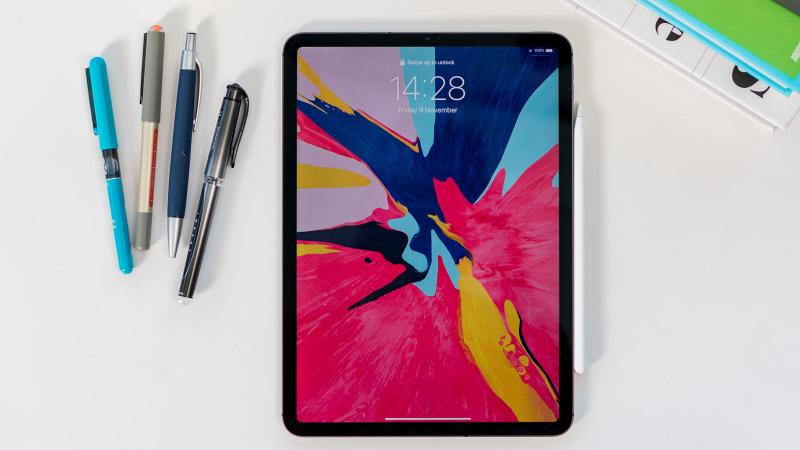

If there’s a Home button under the display, you’ve got an iPad Pro from 2017 or earlier, an iPad Air or iPad mini from 2019 or earlier, or a standard iPad. The Home button looks like this:
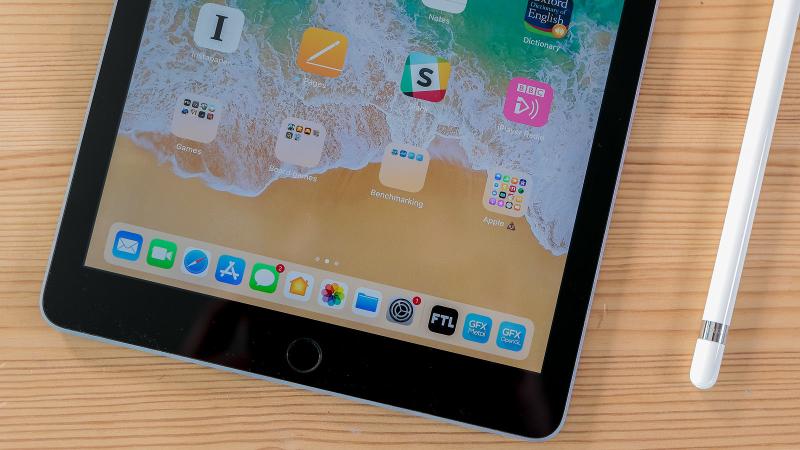

USB-C, Lightning or 30-pin dock
Another simple way of telling apart certain iPads – particularly the iPad 3 and iPad 4, which are otherwise pretty much identical – is whether they have a USB-C, Lightning or old 30-pin dock connector at the bottom.
Here are two examples of the USB-C port, the iPad range’s latest connector tech. All of the current models have this, with the sole exception of the ninth-gen iPad (which is still on Lightning).
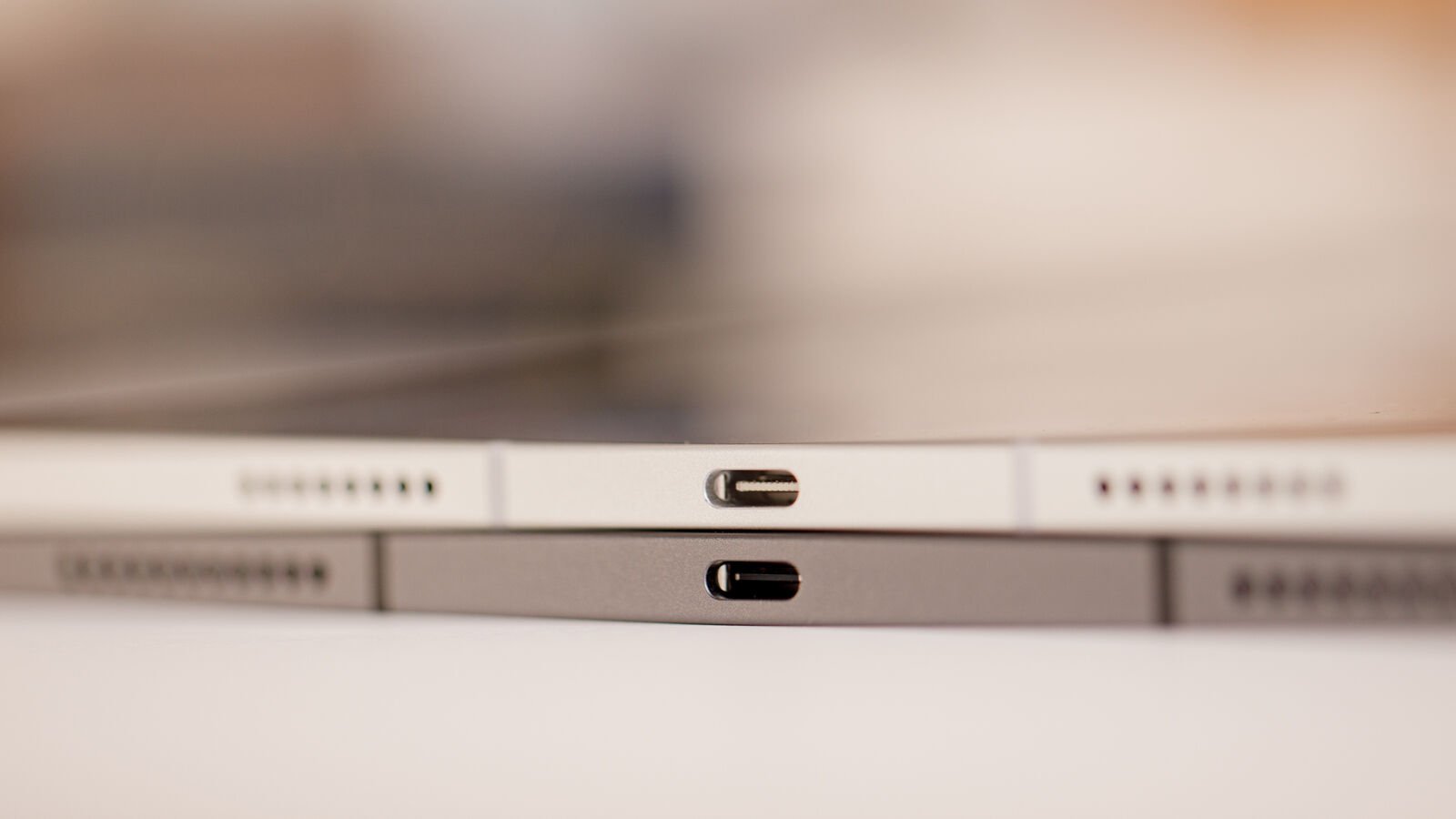

And here’s what the Lightning port looks like. It’s subtly different from USB-C, and the most common connector for iPads: 18 out of 30 possible models have this.
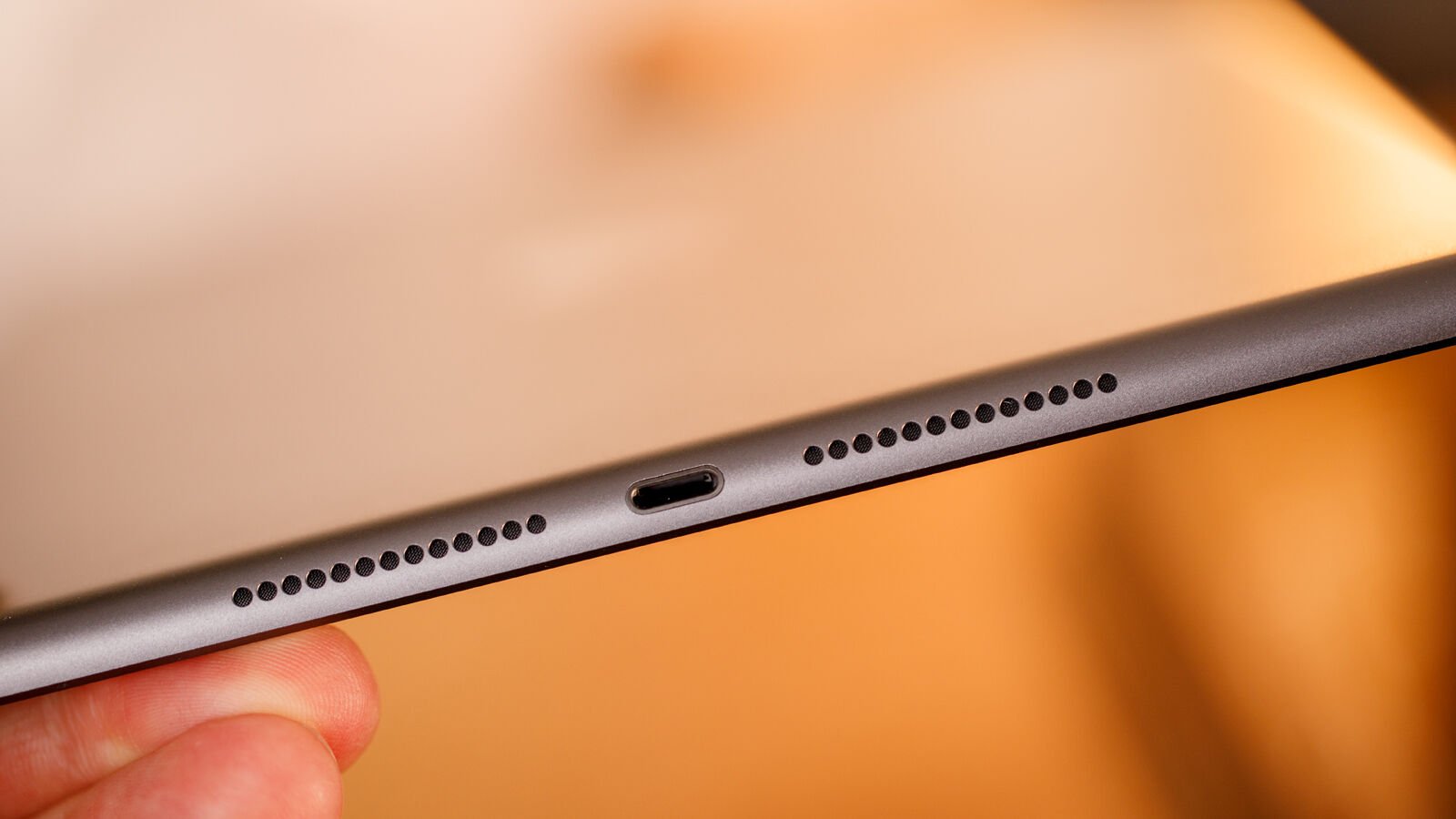

Finally, here’s the old 30-pin dock, which is noticeably wider. This only appeared twice, on the iPad 1 and iPad 2 from over a decade ago.
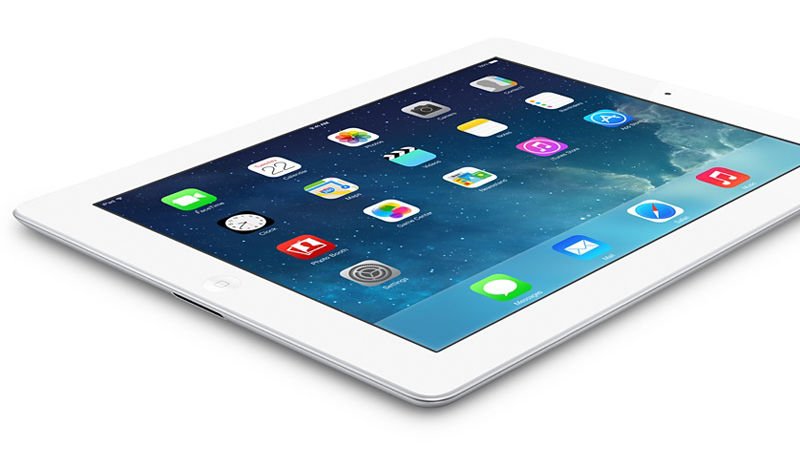

Camera setup
Almost all iPads have a single camera lens on the rear, but you may get lucky here: the four most recent Pro models (both sizes from 2020 and 2021) have twin cameras, which can help to identify them.
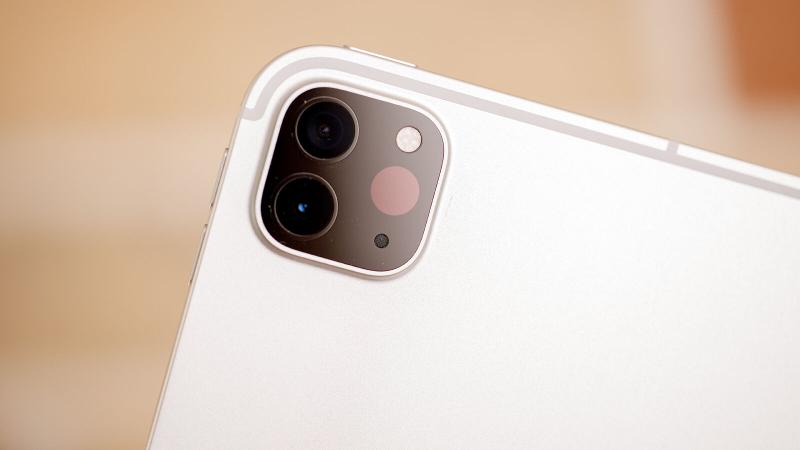

The other exception is the very first iPad model from 2010, which hasn’t got a camera at all.
Speaker setup
Every iPad Pro model offers four-speaker audio, with two at the bottom and another two at the top. Whereas the non-Pro models are all limited to two (or fewer).
Unfortunately it can be hard to tell the difference, because some iPads – including the latest versions of the Air and mini – have four speaker apertures, but only two speakers. Other iPads officially only a single speaker but have two apertures. It’s all rather confusing, and unless you’re confident about being able to tell how many speakers are playing, probably not a useful clue.
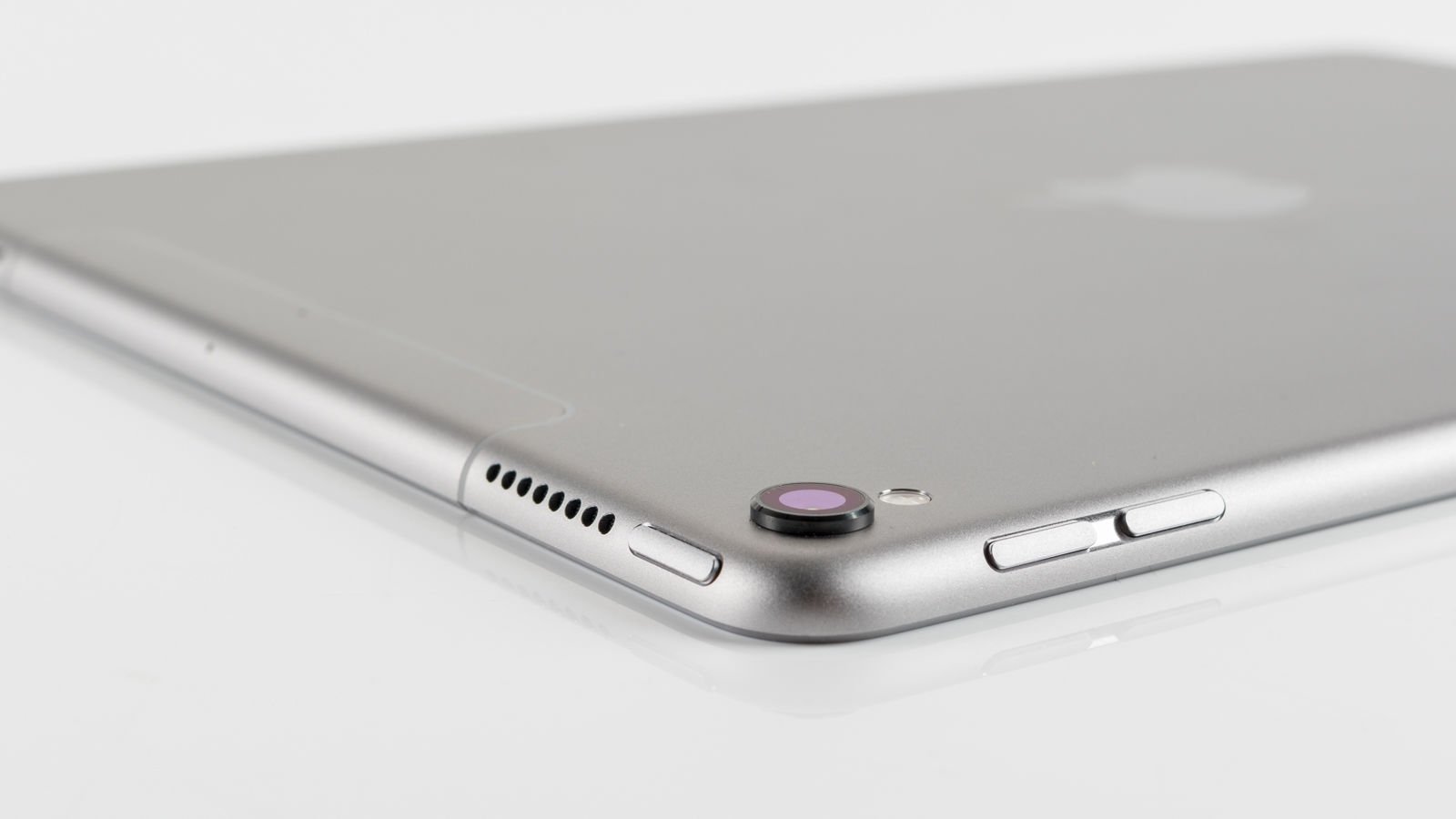

3G, 4G, 5G or just Wi-Fi
Some iPads are Wi-Fi-only, and some also offer mobile connectivity, as long as you have a SIM. You can quickly tell if your iPad is capable of mobile connectivity by looking for the SIM card slot on the side. If you see one then it’s a Wi-Fi + cellular model. If not, then it’s Wi-Fi-only.
The third-generation iPad offered LTE 4G but only in the US. If you wanted 4G here in the UK you had to wait for the iPad 4 which came out later in 2012. If you bought your Wi-Fi & cellular iPad at the end of 2012 or after 2013 then chances are you have 4G – even if it’s not offered in your area.
Finally, 5G support was added to the range in 2021. The 5th-gen iPad Pro 12.9in, the 3rd-gen iPad Pro 11in, the 5th-gen iPad Air and the 6th-gen iPad mini all support 5G.
Despite coming out in 2021, the 9th-gen iPad does not.
Storage
You’ll be able to tell how much storage your iPad has by looking on the back of the device; it will be written just below the word iPad. Most iPads offer 32GB, 64GB, 128GB or 256GB, but the Pro models go as high as 512GB or even (if it’s a recent model) 1TB or 2TB.
Alternatively you can go to Settings > General > About and check beside where it says capacity. If your iPad has 1TB of storage, it must be from the 2018 generation of iPad Pro models or later; if it has 2TB it has to be one of the 2021 Pros, so you just have to measure the screen and find out if it’s the 11in or 12.9in version.
Other than this, there have been such a wide range of storage offerings over the year (with certain offerings discontinued after a while) that it’s much easier to use the model number.
And that’s it – hopefully by now you’ve worked out which model you’ve got. Finding out which iPad you’ve got can be useful when trying to work out if an app is compatible with it, or if you’ll be able to run the next version of iPadOS.
You will also want to know which model it is if you’re thinking of selling your iPad and getting a new one – in which case you’ll also want to check our iPad buying guide and roundup of the best iPad deals.


Comments are closed, but trackbacks and pingbacks are open.